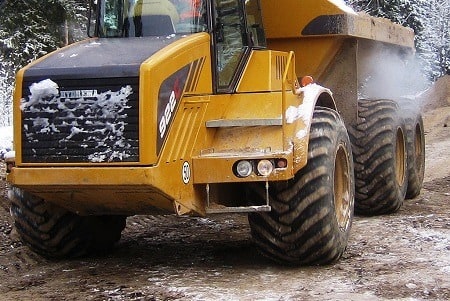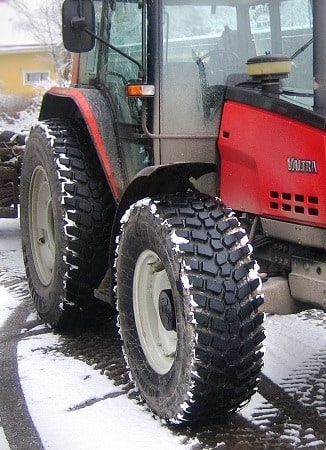Good tire management rolls straight down to your bottom line. These simple steps can help boost your profitability and productivity.
Steve Vandegrift
In the October issue of Waste Advantage Magazine, we discussed the importance of maintaining tires and operating them at the proper inflation pressure. This month, we’ll look at the impact of proper tire maintenance on your bottom line. As we pointed out last month, it all starts with inflation pressure.
Cut Your Fuel Bill
Operating on underinflated tires requires you to burn more fuel. It’s about physics. Underinflated tires can increase rolling resistance by putting too much of the tire’s tread in contact with the road. It takes energy to overcome the friction between the rubber and the road surface.
The energy demand increases quickly. As the inflation pressure of a tire decreases by 25 percent, rolling resistance increases by 13.7 to 19 percent, according to a team of polymer chemists at ExxonMobil Chemical.
That adds up at the pump. According to the National Research Council, reducing tire rolling resistance by 10 percent results in a 1 to 2 percent fuel savings. Think about your operation’s monthly fuel bill. One to 2 percent can be a significant number—and best of all, you can send that right to your bottom line without having to purchase anything more expensive than an air pressure gauge.
Improve Your Tire Life
Underinflated tires don’t last as long as properly inflated ones. Part of the problem is that the sidewalls buckle and load is unevenly distributed across the tread surface. The result is uneven wear, especially along the edges of the tread.
Another part of the problem is that all the buckling and flexing of an underinflated tire’s sidewall creates heat through friction. A former head of research and development at our company used to say, “a tire is born in heat, and it dies in heat.” There are dozens of components in your tires, fused together under high heat and pressure in a mold. Heating that tire back up at the job site or on the road can cause those components to separate, destroying the tire.
Boost Power
The uneven tread wear of underinflated tires points to another problem—poor torque distribution across the tread surface. If only part of your footprint is actually transmitting your machine’s power to the ground surface, you’re missing out. Similarly, the bead can slip on severely underinflated tires, which means that some of the equipment’s energy is being wasted moving your tire around the rim rather than carrying the load forward.
Keep Machinery Moving in the Mud
Winter conditions can make waste management and hauling rough, especially when work sites or roads get muddy, slushy or snowy. Outfitting key machinery—like skid steers and backhoes—with tires designed to work in the mud can keep your crews productive, even when Mother Nature is making a mess of the place.
Look for tires with high void-to-tread ratios. For industrial machinery tires, you’ll want aggressive cleats, sharp shoulders that bite into soft surfaces, and features like flaring tread designs or mud breakers between cleats that help improve tire self-cleaning.
The same goes for truck tires. Pickup and hauling on wintry roads can get dicey, which is why truck tire manufacturers are constantly innovating new lugs and patterns to improve traction in snow and ice. Make sure you’re running your fleet on tires designed for winter conditions.
Stay Warm
What’s worse than having to work on a bitter winter day? Having to change a tire in the snow. Maintaining your tires will help you keep your tire changes to scheduled maintenance times, where the guys in the heated bay can do the job under good conditions—and keep your crews warm, happy and safe.
The Bottom Line
Keeping your crews productive and your machinery moving is vital to maintaining profitability and customer satisfaction. That’s especially tough in the winter. Selecting the right tires and maintaining them properly is the first, key step in getting greater productivity from your staff and more value from your tires.
Steve Vandegrift is Product Manager for Alliance Tire Americas (Wakefield, MA), part of the global Alliance Tire Group. Steve started his career in the tire business in the Galaxy warehouse and is now a walking encyclopedia of knowledge on industrial, construction, forestry and agricultural tires. He oversees the Galaxy and Primex brands for Alliance. Steve can be reached at (781) 321-3190, ext. 210 or via e-mail at [email protected].


